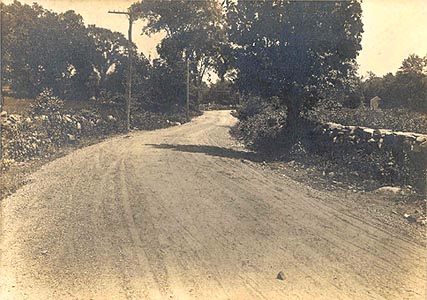| Join | Official Historian | City of Stamford | Blog | About Us | |
| Jewish Historical Society | Civil War Roundtable | Contact Us | |
|
|
|
|
Photo Archivist's Selection of the Month: September 2002Public Works Department 1914
|
 |
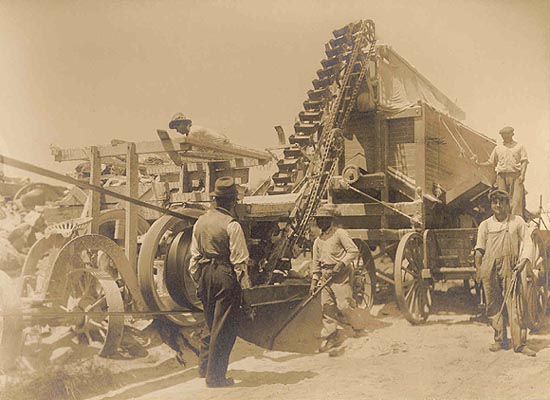 |
 |
| Image below—and two details of it—shows the laying of rocks and is also labelled to have been taken at Poor Farm on Scofieldtown Road, but this may not be correct. |
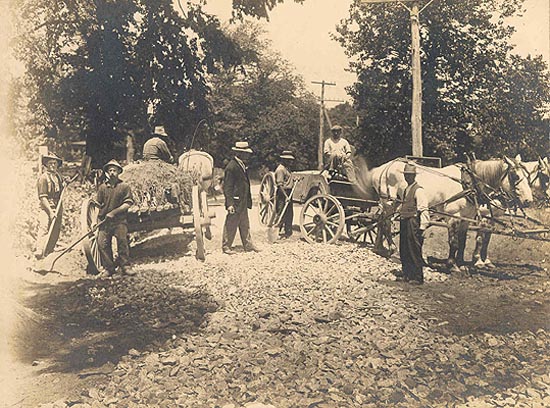 |
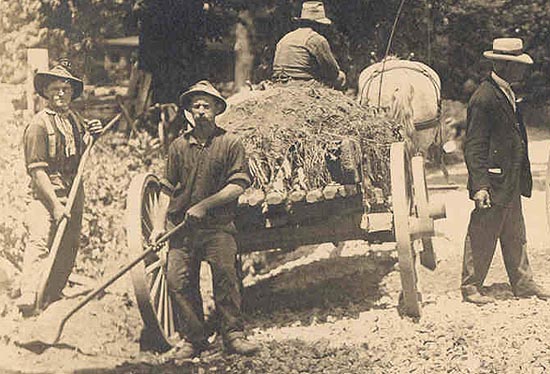 |
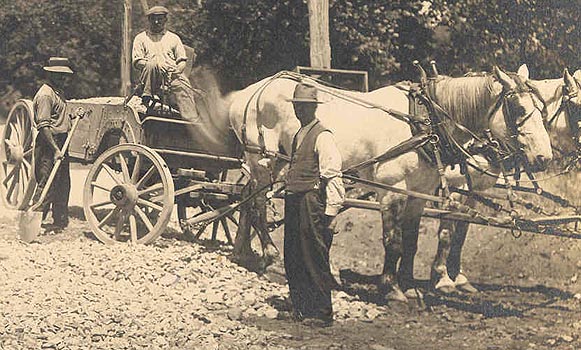 |
|
The Oaklawn Road, the cross road not long since completed near the city limits, connects Newfield Avenue with North Stamford state road and is about one mile long. It is built with a traveled path sixteen feet in width and the ground stone was spread from twelve to eighteen inches in depth. All the stone from the Dr. Barnes property, together with tons blasted in the fields near the stone crusher, has been utilized in making this one of the most durable stone roads in the town of Stamford, so good a one in fact that the present Board of Selectmen are much pleased with the success in making Oaklawn a permanent road. With the completion of this and Belltown Road, Hope Street, Glenbrook, is now connected with practically a continuous crossroad near the city line that can be used with safety the year around whereas during the winter and spring before any work was done on this road as many as seventeen auto trucks were mired.
The Belltown Road has a traveled path twenty feet in width, with an average depth of ground stone of sixteen inches, and it is safe to say that for durability it will favorably compare with any macadam road in the town of Stamford. The length of this road is about two-thirds of a mile, and to put it in its present good condition required nearly three thousand tons of stone all of which was taken from the Barnes tract. So appreciative of this road are the residents of Belltown that after its completion they built at their own expense a waiting station near the trolley track.
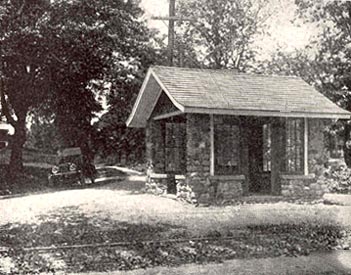
Trolley Waiting Station at Toms Road & Hope Street
The Newfield Road, much used by automobiles, was a problem on account of its wet condition. More than one mile was dug up in order to provide sufficient depth for an underdrainage of stone on which ground stone more than one foot in depth was spread in order to prevent heaving or buckling. Good drainage is an important factor in the construction of a. road and if in the rebuilding of the Newfield Road such provision had not been made it would have heaved and rutted badly. Newfield Avenue is noted for its fine view of Long Island Sound while riding over it in a southerly direction.
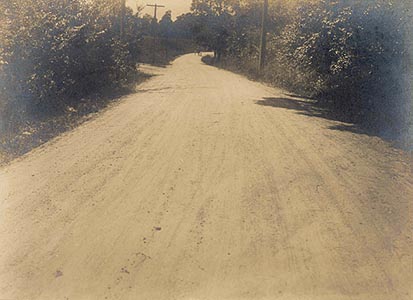 |
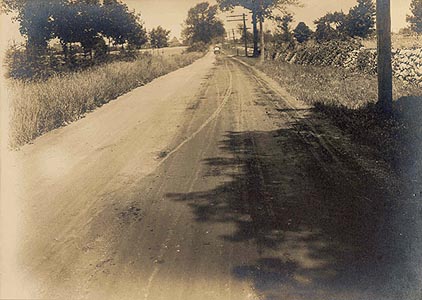 |
| Belltown Road | Newfield Avenue |
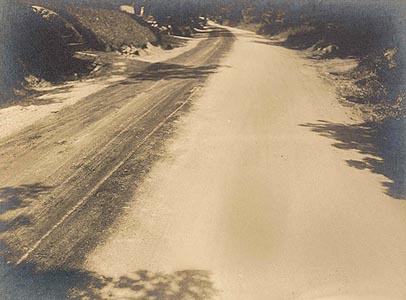 |
Mr. Michaels is a man familiar with the road conditions at all seasons of the year, and thereby eminently fitted for his task. He has made it a rule to engage stone in advance from property owners nearest the section of road needing improvement, thereby saving expense of hauling from a distance. After the Selectmen approve the Michaelizing [sic] of the road, work starts in proper season under Foreman Samuel Ferris, a thoroughly reliable and practical man and a road builder from boyhood. The engineer and other employees are worthy of commendation. That the town of Stamford can boast of its durable roads built of native stone at a low cost is due to the cooperation of property owners with this force of practical men
.
Editor's Note: It did not always work perfectly of course. There were drawbacks. The images below were taken after a washout on Farms Road. William R. Michaels (to the left) and John Moore, brother of Mayor Charles E. Moore, 1938-40, viewing a washout on Farms Road.
 |
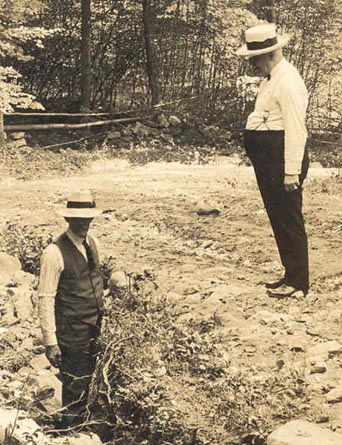 |
Photos © Stamford Historical Society
Other Photo Archivist Selections of the Month
Photo Collection Information
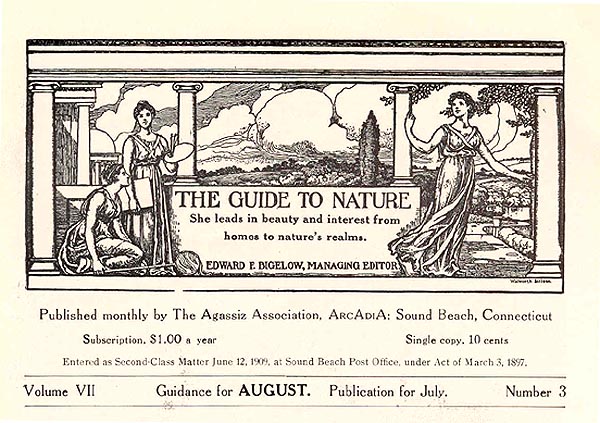 Turning
Stone Walls into Roads.
Turning
Stone Walls into Roads. 